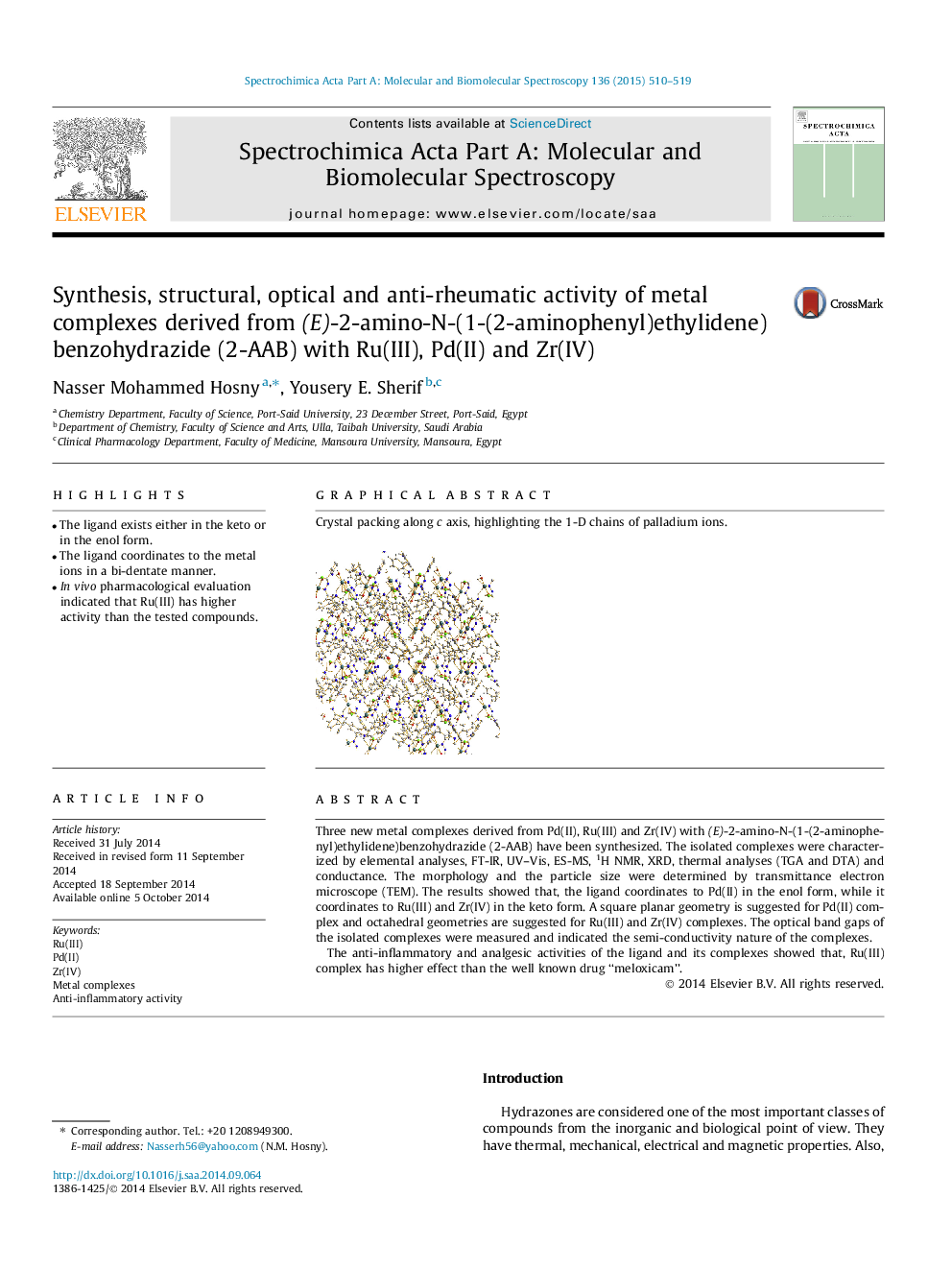| Article ID | Journal | Published Year | Pages | File Type |
|---|---|---|---|---|
| 1229465 | Spectrochimica Acta Part A: Molecular and Biomolecular Spectroscopy | 2015 | 10 Pages |
•The ligand exists either in the keto or in the enol form.•The ligand coordinates to the metal ions in a bi-dentate manner.•In vivo pharmacological evaluation indicated that Ru(III) has higher activity than the tested compounds.
Three new metal complexes derived from Pd(II), Ru(III) and Zr(IV) with (E)-2-amino-N-(1-(2-aminophenyl)ethylidene)benzohydrazide (2-AAB) have been synthesized. The isolated complexes were characterized by elemental analyses, FT-IR, UV–Vis, ES-MS, 1H NMR, XRD, thermal analyses (TGA and DTA) and conductance. The morphology and the particle size were determined by transmittance electron microscope (TEM). The results showed that, the ligand coordinates to Pd(II) in the enol form, while it coordinates to Ru(III) and Zr(IV) in the keto form. A square planar geometry is suggested for Pd(II) complex and octahedral geometries are suggested for Ru(III) and Zr(IV) complexes. The optical band gaps of the isolated complexes were measured and indicated the semi-conductivity nature of the complexes.The anti-inflammatory and analgesic activities of the ligand and its complexes showed that, Ru(III) complex has higher effect than the well known drug “meloxicam”.
Graphical abstractCrystal packing along c axis, highlighting the 1-D chains of palladium ions.Figure optionsDownload full-size imageDownload as PowerPoint slide
